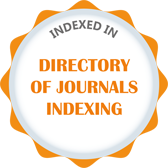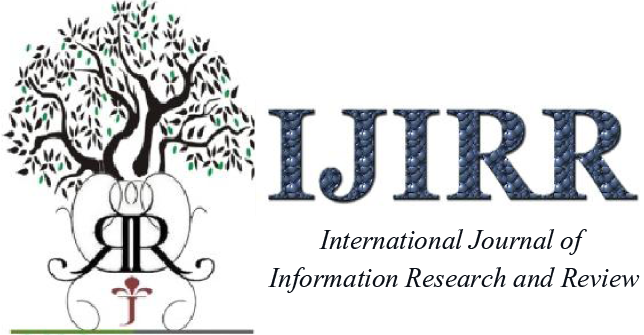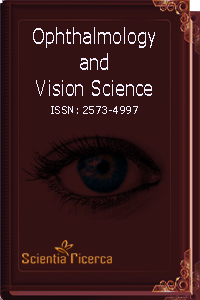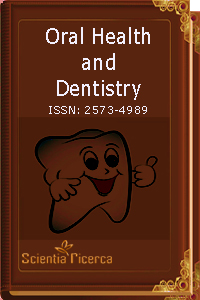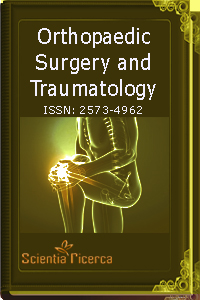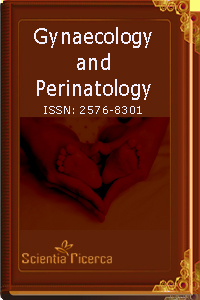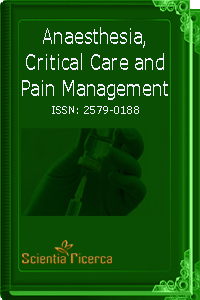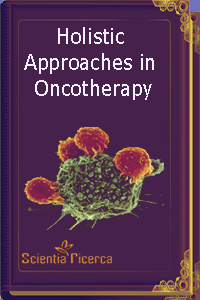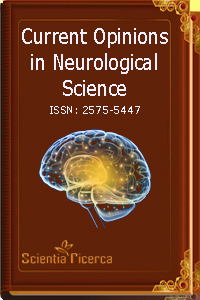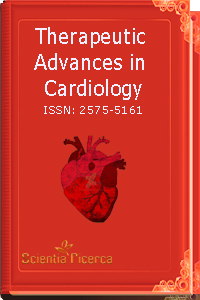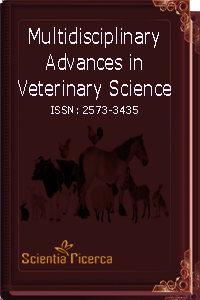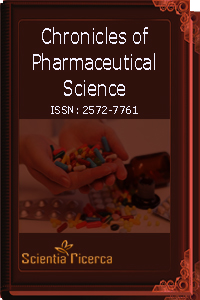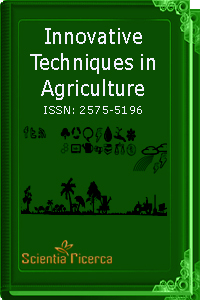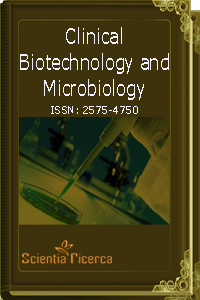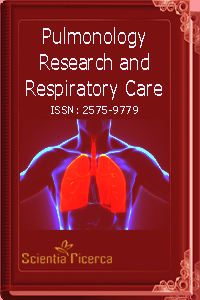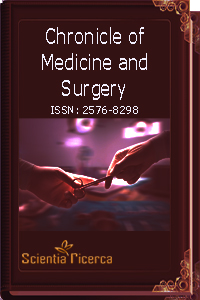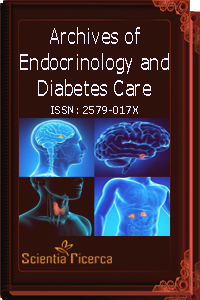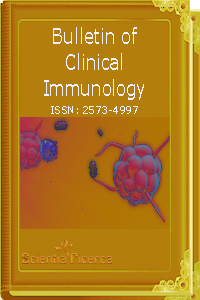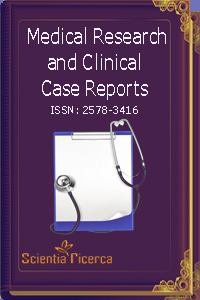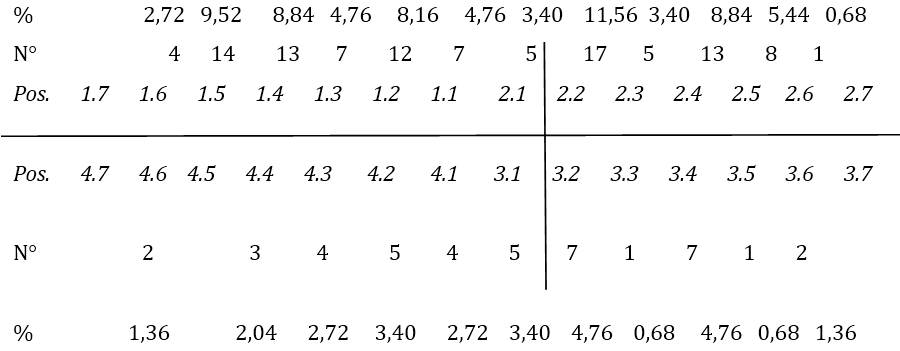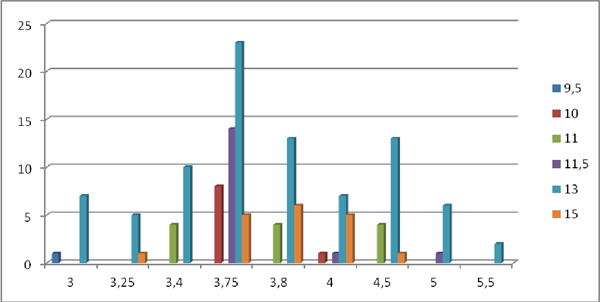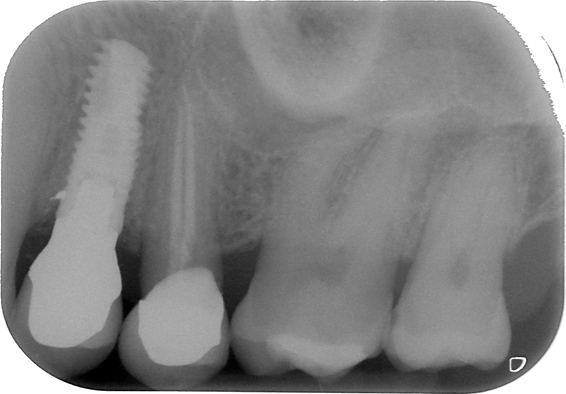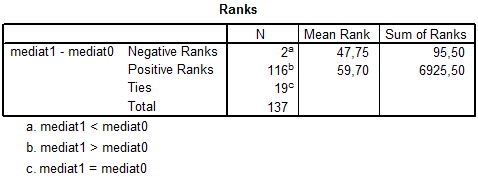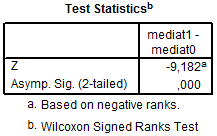Research Article
Volume 1 Issue 1 - 2017
Single Post-Extractive Implants with Immediate Loading: Soft Tissue Response After 10 Years
1Private practice in Milan and Lomazzo (Como) Italy
2Private practice in Milan, Italy
2Private practice in Milan, Italy
*Corresponding Author: Giuliano Garlini, Private practice in Milan and Lomazzo (Como) Italy.
Received: September 18, 2016; Published: March 08, 2017
Abstract
Background: The aim of this study was to evaluate the survival rate of 147 post-extractive implants with immediate loading and the condition of the peri-implant soft and hard tissues after 10 years assuming that implants inserted deeper into fresh extraction sockets may be more prone to developing peri-implant tissue diseases.
Methods: All the implants were inserted between January 2002 and October 2005 and were loaded with a screw-retained temporary crown. After 6 months a definitive zirconium-ceramic crown was cemented. The patients were checked at regular intervals: 1 week after the surgery, then after 1, 2, 6 and 12 months and were then recalled annually. The follow-up examinations were performed according to a specific protocol which provided recordings of the following parameters: fixture survival and implant stability, probing depth (PD), bleeding on probing (BOP) and occlusal evaluation.
Results: A total of 147 post-extractive implants with immediate loading were considered. The cumulative survival rate (CSR) of the implants of the sample was 98.56%, according to the data of the traditional two-step technique.
All the implants had a normal PD median value - 2.42 mm - at the baseline (T0) - and at the final follow-up (T1) the PD was 3.00 mm with a statistically significant increased depth of 0.58 mm, but clinically insignificant.
Conclusions: With the limitations of this retrospective study, we can conclude that this implant-prosthesis solution, seems to have a cumulative survival rate which is comparable to the traditional implant loading protocols. No increase in the incidence of mucositis or perimplantitis was detected.
Keywords: Post-extractive implants; Immediate loading; Mucositis; Perimplantitis
Introduction
Implant dentistry became more popular with the discovery of the biocompatibility of titanium.
The original studies advocated a 2-stage surgical protocol and submerged healing to ensure implant osseointegration. The rationale behind this approach is that micromovements of implants caused by functional forces around the bone-implant interface during the wound healing process may result in fibrous tissue formation rather than bone contact, leading to clinical failure (Adell., et al. 1981). However, some concerns arose when this 2-stage surgical protocol was used, including: avoiding a prosthesis for a minimum of 2 weeks to promote uneventful healing, loose dentures, pain, difficulty with chewing during the transitional removable prosthesis period (Schnitman., et al. 1997) and the need for additional surgery to expose implant fixtures. These concerns commonly caused psychological or sociological challenges for patients who underwent implant treatment (Salama., et al. 1995). With the trend of shortening treatment time and patient discomfort, immediate loading implants seemed to be an alternative approach.
Immediate loading of root-form endosseous dental implants has been provided in the literature as a way of eliminating the 3 to 6 month healing period. The technique has been described in combination with mandibular bar-retained overdentures (Babbush., et al. 1986, Gatti., et al. 2000), complete arch implant-supported prostheses (Schnitman., et al. 1997-Salama., et al. 1995) and partial edentoulism (Piattelli., et al. 1997).
The insertion of dental implants immediately after tooth extraction is also convenient for the patient (Hammerle., et al. 2004). There is, however, one major concern over immediate implant placement: the resorption of the facial bone wall, as indicated in preclinical (Botticelli., et al. 2004; Araujo & Lindhe 2005; Araujo., et al. 2006) and clinical studies (Covani., et al. 2004;). Less resorption occurs when the gap between the facial bone wall and the implant is filled with a low-substitution biomaterial, such as demineralized bovine bone (Caneva., et al. 2013, Botticelli 2008). The 1-year survival rate of implants inserted using this protocol is comparable to the more conservative protocols (Caneva., et al. 2010). In the esthetic zone, implant survival is not sufficient to determine clinical success (Botticelli., et al. 2004; Chen 2007 Chen & Buser 2014). Vertical resorption of the facial bone entails an increased risk of soft tissue breakdown (Covani., et al. 2004; Benic., et al. 2012).
The aim of this study was to evaluate the survival rate of post-extractive implants with immediate loading, and the conditions of peri-implant soft and hard tissues after 10 years assuming that implants inserted deeper into fresh extraction sockets may be more subject to developing peri-implant tissue diseases that may lead to failure of the implant-crown complex.
Material and Methods
A total of 94 consecutive patients who received 147 post-extractive implants with immediate loading and followed up to 10 years were included in this retrospective study.
Between January 2002 and October 2005, 39 males and 55 females, aged between 29 and 72 years (mean age 52.38), referring to two private offices in Milan and Lomazzo (Italy) were treated for the substitution of a single tooth involving extraction and replacement with an implant-supported prosthesis.
Inclusion criteria were the presence of a tooth to be extracted due to vertical and horizontal fracture, endodontic reasons, extensive decay, sufficient amount of bone to install a 10 mm fixture, bilateral occlusal stability, good oral hygiene, absence of active periodontal disease and no parafunctions. Exclusion criteria were inadequate amounts of bone in the bucco-palatal/lingual direction, or a surgical site consisting of type IV bone as assessed during the surgery by the surgeon. Other exclusion criteria were systemic diseases possibly interfering with osseointegration process such as diabetes, osteoporosis, immunological disease, cigarette smoking and also pregnancy or lactation.
All patients gave informed consent.
Medical records were prepared for each patient recruited by means of medical history inquiry, physical examination and specific dental periodontal status. General and specific radiographic examinations (OPT, endoral X-ray, CT) were performed during the diagnostic phase and during the subsequent stages according to needs. A diagnostic impression was made and a wax pattern was formed in the area of the missing tooth to create a surgical acrylic drilling template. Each patient was previously subjected to a single SRP session. Personalized oral hygiene instructions were verbally provided.
Medical records were prepared for each patient recruited by means of medical history inquiry, physical examination and specific dental periodontal status. General and specific radiographic examinations (OPT, endoral X-ray, CT) were performed during the diagnostic phase and during the subsequent stages according to needs. A diagnostic impression was made and a wax pattern was formed in the area of the missing tooth to create a surgical acrylic drilling template. Each patient was previously subjected to a single SRP session. Personalized oral hygiene instructions were verbally provided.
One week after the diagnostic phase, the dental elements were extracted with contextual insertion of implants in alveolar post-extraction sockets in accordance with standardized procedures. The surveyed sample distribution is shown in table 1.
Surgery
A total of 147 implants were inserted between January 2002 and October 2005: 77 Xive implants (Dentsply-Friadent Mannheim–Germany) and 70 Osseotite Implants (Zimmer Biomet 3I, West Palm Beach, Usa). All implants had a rough surface for etching and/or sandblasting. The characteristics of the implants, their length and diameter, their location and distribution are summarized in tables 2 and 3.
A total of 147 implants were inserted between January 2002 and October 2005: 77 Xive implants (Dentsply-Friadent Mannheim–Germany) and 70 Osseotite Implants (Zimmer Biomet 3I, West Palm Beach, Usa). All implants had a rough surface for etching and/or sandblasting. The characteristics of the implants, their length and diameter, their location and distribution are summarized in tables 2 and 3.
| Diameter | h. 9,5 | h. 10 | h. 11 | h. 11,5 | h. 13 | h. 15 | tot. |
| 3 | 7 (4,76) | 7 (4,76) | |||||
| 3,25 | 5 (3,40) | 1(0,68) | 6 (4,08) | ||||
| 3,4 | 4 (2,72) | 10 (6,80) | 14 (9,52) | ||||
| 3,75 | 8 (5,44) | 14 (9,52) | 23 (15,64) | 5(3,40) | 50 (34,01) | ||
| 3,8 | 4 (2,72) | 4 (2,72) | 13 (8,84) | 6(4,08) | 27 (18,36) | ||
| 4 | 1(0,68) | 1 (0,68) | 7 (4,76) | 5(3,40) | 14 (9,52) | ||
| 4,5 | 2 (1,36) | 4 (2,72) | 13 (8,84) | 1(0,68) | 20 (13,60) | ||
| 5 | 1 (0,68) | 6 (4,08) | 7 (4,76) | ||||
| 5,5 | 2 (1,36) | 2 (1,36) | |||||
| 6 (4,08) | 9 (6,12) | 11 (7,48) | 17 (11,56) | 86 (58,50) | 18 (12,24) | 147 (100) |
The day before surgery, medical therapy was given as follows: Amoxicillin (Pharmacia Italia-Italy) 1g/8h for six days, Destroketoprofene (Desketo –Malesci- Italy) 50 mg/12h for three days. The day of the surgery each patient received medication with diazepam (Valium 2 –Roche-Italy), 1 drop/2 Kg weight an hour before the operation.
Local anesthesia was given with Ecocain (Molteni Dental-Italy) 2%, 1:50000 epinephrine. The tooth was extracted and the implant inserted using a flapless technique. The fixture was inserted in a more palatal position in order to contrast buccal wall resorption of the residual alveolar socket. (Chausu., et al. 2001, Belser., et al. 2004).
The gap between the implant and the facial bone wall was filled with deproteinized bovine bone (BioOss Collagen Geistlich Biomaterials, Wolhusen, Lucerne, Switzerland) and a collagen membrane (BioGide", Geistlich Biomaterials) was inserted outside of the socket between the buccal bone and the buccal flap using a “tunnel” technique in order to increase the thickness of the hard tissue.
Adequate primary implant stability was verified by the torque rating (32 N/cm) using a torque wrench.
Standardized periapical radiographs were taken after implant insertion (Strind 1985). An occlusal index of vinyl polysiloxane (President Putty, Coltene, Switzerland) was attached to the film holder and used as an aid to standardize the angulation and positioning of the film in relation to the beam.
Standardized periapical radiographs were taken after implant insertion (Strind 1985). An occlusal index of vinyl polysiloxane (President Putty, Coltene, Switzerland) was attached to the film holder and used as an aid to standardize the angulation and positioning of the film in relation to the beam.
Prosthetic Technique
A screw-retained implant-supported temporary prosthesis was inserted in all patients immediately after surgery.
A screw-retained implant-supported temporary prosthesis was inserted in all patients immediately after surgery.
Temporary restoration of the implants was performed at the end of the surgical procedure by adapting the temporary acrylic crowns on temporary metal abutments. In all cases a screw-retained crown was produced which was tightened to a pre-set torque in accordance with the requirements of the implant production companies (on average 15-20 N/cm). Finally, the access hole to the screw was filled with cotton and covered with a light curing, single component composite resin. (Fermit®-N, Ivoclar Vivadent AG, Schaan, Liechtenstein). The crown occlusion was designed without contacts in the maximum intercuspation position and lateral excursions.
The emergence profile of the crown was 360° concave in order to create adequate space for the soft tissue and minimize bone resorption due to the presence of the peri-implant biological width. This technique has been previously presented in a paper (Redemagni., et al. 2009).
Patients were instructed to avoid chewing in the treated area for the first 3 months.
Six months after the installation of the implant, the temporary crown was removed, an impression was taken using a polyether material (Impregum, 3M Espe, Germany) with an individual transfer coping which accurately duplicates the transmucosal emergency profile determined by the temporary restoration using Hinds technique. (Hinds 1997).
Six months after the installation of the implant, the temporary crown was removed, an impression was taken using a polyether material (Impregum, 3M Espe, Germany) with an individual transfer coping which accurately duplicates the transmucosal emergency profile determined by the temporary restoration using Hinds technique. (Hinds 1997).
A permanent zirconium-ceramic crown (Lava, 3M ESPE, USA) was cemented onto an individual zirconium abutment. This crown was designed with the same functional occlusal pattern as that of the corresponding contralateral natural tooth and was permanently cemented. The definitive zirconium-ceramic crown was luted with a resin cement (Relix Unicem, 3M ESPE, USA). The excess cement was carefully removed and controlled both clinically and radiologically.
Follow up routines
The patients were visited at regular intervals: 1 week after the surgery, after 1, 2, 6 and 12 months and were then recalled annually. The follow-up examinations were performed according to a specific protocol checking the following parameters:
The patients were visited at regular intervals: 1 week after the surgery, after 1, 2, 6 and 12 months and were then recalled annually. The follow-up examinations were performed according to a specific protocol checking the following parameters:
- Fixture survival and implant stability
- Probing depth (PD) and bleeding on probing (BOP)
- Occlusal evaluation
Implant stability: implant stability was assessed using 2 dental instrument handles placed on the buccal and lingual surfaces of the crown according to the Jemt’s classification (Jemt 1989).
Probing depth (PD) and Bleeding on probing (BOP): The PD was calculated at 6 sites (mesio-buccal, buccal, disto-buccal, disto-lingual, lingual, mesio-lingual). The PD values were measured using a periodontal probe (PCPUNC15 Hu-Friedy, Chicago, IL, USA) with a digital pressure of approximately 25 gr.
The angulated bleeding index was recorded using a periodontal probe running along the buccal and lingual margin in 60° angulations at the entrance of the sulcus. Bleeding or lack of bleeding was recorded after 30 seconds. During this examination it was possible to identify the presence or absence of suppuration in the peri-implant tissues.
Occlusal evaluation: Occlusal contacts in intercostal and at lateral excursions were recorded using Bausch-occlusal foil (Bausch Articulating Paper, Dr. Bausch Koln, Germany).
All of the above measurements were performed at time T0 (baseline) - delivery of the final restoration (October 2005) - and then at the T1 follow up between September and November 2015. (Figure 1, 2, 3, 4)
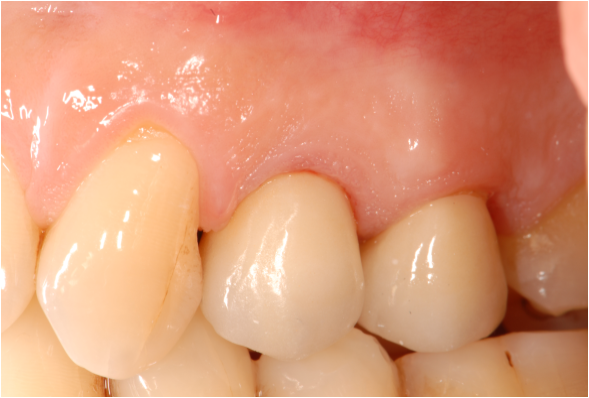
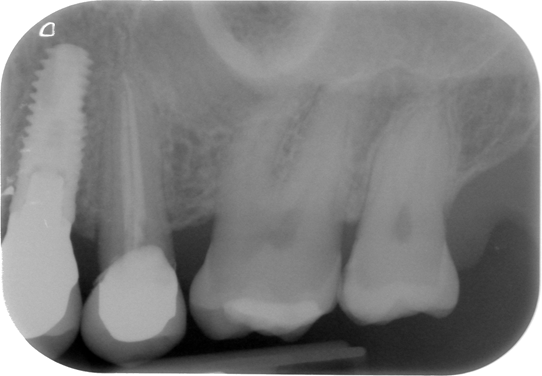
Figure 1 and 2: Clinical and radiological situation at the time of insertion of the definitive crown in September 2004.
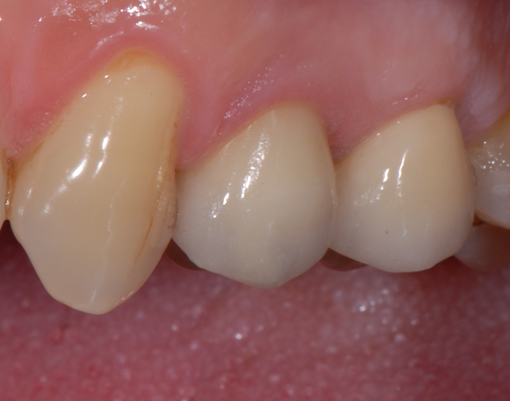
Statistical analysis
All of the data were analyzed using statistical software (Statistical Package for the Social Sciences, SPSS Inc., Chicago, IL, USA). The mean PD and BOP value were calculated for all of the implants.
All of the data were analyzed using statistical software (Statistical Package for the Social Sciences, SPSS Inc., Chicago, IL, USA). The mean PD and BOP value were calculated for all of the implants.
The average values of the measurements were calculated at the beginning and end of the follow-up and compared using the Wilcoxon test for paired samples (non-parametric test). The value for statistical significance was set at α = .05 (p < .05)
The authors declare that the study was carried out in compliance with the ethical standards set forth by the Declaration of Helsinki.
Results
A total of 94 consecutive patients who received 147 post-extractive implants with immediate loading between January 2002 and October 2005 were considered. 10 patients dropped out (6.80%): 2 (1.36%) due to premature implant failure (in the first month after insertion) and 8 (5.44%) were no longer contactable for various reasons (deceased, moved home, not available).
All of the teeth were extracted because of endodontic problems, extensive decay, corono-radicular fractures, and none due to advanced periodontal disease. 147 osseointegrated implants were inserted in the post-extraction sites: 106 in the upper jaw and 41 in the lower jaw.
The mean PD value at T0 was 2.42 mm while at T1 it was 3.00. This difference was statically significant (Z = -9.18, p < 0.001) (Table 4)
Paired Samples Statistics
| Mean | N | Std. Deviation | Std. Error Mean | ||
| Pair 1 | Mean t0 | 2,4220 | 137 | ,70342 | ,06010 |
| Mean t1 | 3,004 | 137 | ,7515 | ,0642 | |
NPar Tests Wilcoxon Signed Ranks Test
Table 4: PD at T0 and at T1.
The BOP at T0 was always negative but at control T1 it was positive for 52 implants (37.95%) and negative for 85 (62.05%).
The median PD at T0 of the implants with negative BOP at T0 and positive at T1 was 2, 46 mm. This difference was statistically relevant (Z = -5.60, p < 0.001) (Table 5)
The median PD at T1 of the implants with negative BOP at T0 and positive at T1 was 3.09 mm. This difference was statistically relevant (Z = -5.60, p < 0.001) (Table 5)
Paired Samples Statistics
| Mean | N | Std. Deviation | Std. Error Mean | ||
| Pair 1 | Mean T0 | 2,4654 | 52 | ,74777 | ,10370 |
| Mean T1 | 3,090 | 52 | ,7474 | ,1036 | |
Test Statistics (b)
| Mean T1 Mean T0 | |
| Z | -5,600(a) |
| Asymp. Sig. (2-tailed) | ,000 |
a. Based on negative ranks.
b. Wilcoxon Signed Ranks Test
Table 5: PD T0 vs PD T1 (BOP – T0, BOP+ T1).
b. Wilcoxon Signed Ranks Test
Table 5: PD T0 vs PD T1 (BOP – T0, BOP+ T1).
The mean PD at T0 of the implants with negative BOP at T0 and negative BOP at T1 was 2.39 mm (Table 6)
The mean PD at T1 of the implants with negative BOP at T0 and negative BOP at T1 was 2.95 mm. This difference was statistically significant. (Z= -7.33, p < 0.001) (Table 6)
Paired Samples Statistics
| Mean | N | Std. Deviation | Std. Error Mean | ||
| Pair 1 | Meant0 | 2,3954 | 85 | ,67804 | ,07354 |
| Meant1 | 2,952 | 85 | ,7536 | ,0817 | |
Test Statistics (b)
| Mean T1 Mean T0 | |
| Z | -7,330(a) |
| Asymp. Sig. (2-tailed) | ,000 |
a. Based on negative ranks.
b. Wilcoxon Signed Ranks Test
Table 6: PD T0 vs. PD T1 (BOP- T0, BOP- T1).
b. Wilcoxon Signed Ranks Test
Table 6: PD T0 vs. PD T1 (BOP- T0, BOP- T1).
Peri-implant suppuration was identified in 9 cases (6.56%) at T1. The mean PD value of these implants at T0 was 2.44 mm while the mean PD value at control T1 was 3.25 mm (Z= -2.52, p < 0.013) (Table 7).
| Mean | N | Std. Deviation | Std. Error Mean | ||
| Pair 1 | Meant0 | 2,4411 | 9 | ,68212 | ,22737 |
| Meant1 | 3,257 | 9 | ,7718 | ,2573 | |
Test Statistics (b)
| Mean T1 Mean T0 | |
| Z | -2,524(a) |
| Asymp. Sig. (2-tailed) | ,012 |
a. Based on negative ranks.
b. Wilcoxon Signed Ranks Test
Table 7: Suppuration T0-T1.
b. Wilcoxon Signed Ranks Test
Table 7: Suppuration T0-T1.
All of the implants were stable at T1. The cumulative survival rate (CSR) of the implants of the sample was 98.56%, according to the data of the traditional two-step technique.
As regards occlusal contacts, only a few adjustments were necessary during the follow-up controls.
All the patients were satisfied with the implant supported prostheses from an aesthetic and functional point of view.
Discussion
The aim of this study was to evaluate the behavior of the peri-implant tissues around osseointegrated post-extractive implants with a follow-up of 10 years. The authors aimed to evaluate if implants, inserted slightly deeper into the extraction sockets, are more prone to developing peri-implant diseases.
The results show that all implants had a normal PD - 2.42 mm - at the beginning of observation and at the final follow -up – 3.00 mm - with an increase in average depth of around 0.58 mm, statistically significant but clinically insignificant. More significant is the fact that the BOP is positive in approximately 40% of the implants on final inspection, being negative at the beginning of the observation.
Nevertheless, clinically, the PD has not changed significantly - beyond the mere statistical fact - considering the average of around 0.62 mm depth survey (3.08 from 2.42 mm to 3.08 mm) in implants BOP - at T0 but BOP + at T1. On the other hand, the implants BOP - at T0 to T1 and remained so, there has been an increase in the probing depth which is on average similar: 0.56 mm (from 2.39 mm to 2.95 mm).
The simple positivity of bleeding on probing, dissociated from other clinical variants, cannot be regarded as pathognomonic of peri-implantitis, but a mere sign of slight inflammation (mucositis). The presence of pus was recorded in 6.5 % of the cases at final inspection, but in these implants the PD remained within the clinical tolerance limits (2.44 mm at T0 compared to an average of 2.42 for all implants and 3.25 mm at T1 compared to an average of 3.00 for all healthy implants). The limited average increase in probing depth has little clinical value beyond a purely statistical one. The difference between the start and end of follow-up proved to be less than a millimeter (3.25 to 2.44 mm = 0.81), significantly higher than the average of healthy implants (0.58 mm) but it remained comparable to that measured in similar situations in traditional systems (Lang., et al. 2004).
One of the most difficult clinical goals to achieve in implant surgery is the preservation of the hard and soft tissue due to the loss of one or more dental elements. From a surgical point of view, modern guidelines suggest that the appropriate symmetry and morphology of the soft tissue can be obtained by correct three-dimensional implant placement, so as to obtain a correct emergence profile of the future prosthetic restoration.
However, recent studies have questioned the possibility that the inclusion of post-extraction implants could prevent bone resorption (Araujo., et al. 2006).
Several randomized controlled trials analyzing post-extraction implant placement (Chen, 2007) describe recessions of the vestibular mucosa on average of around 0.5-0.9 mm. The frequency of recessions in immediate systems is high and is greater than 1 mm for 40% of the sites. Almost one third of the analyzed sites shows recessions of 0.5 mm or more. The thickness of the soft tissue has an important role in resisting surgical insults (Seibert., et al. 1989) in oral implantology the peri-implant soft tissue is classified as thick, medium, and fine (Martin 2007) and each biotype has specific characteristics. A recent study [Nisapakultorn., et al. 2010] showed that the peri-implant biotype is closely associated with the margin of vestibular attack and that patients with thin biotype have less coverage of the interdental papilla and increased risk of gingival recession. Nevertheless, by filling the buccal peri-implant to the alveolar bone gap with a biomaterial (Bio-Oss collagen), using a concave abutment, and in the presence of a thin tissue biotype to graft some connective tissue, the root bump remains stable. Furthermore, the quantity of connective tissue around the implant components can be thicker, more stable and less subject to recession. Besides, according to the study of Redemagni and co-workers (Redemagni., et al. 2009), a concave abutment dressing increased the space around the implant to recreate the biological width and to increase the thickness of the connective tissue component which determines higher resistance to the mechanical and bacterial stresses around the implant neck.
Conclusion
With the limitations of this retrospective study of post-extractive implants immediately loaded with a follow-up of 10 years, we can conclude that this implant-prosthesis solution, when performed in appropriately selected clinical cases, could be used with a certain degree of confidence, presenting in the long time a percentage of implant survival and complications which are sufficiently comparable to the conventional, widely tested, two-step loading protocol of the implants (Anitua., et al. 2016, Malò 2015., et al.) In particular, the reaction of the peri-implant soft tissue appears to be comparable to that of conventionally loaded implants. Peri-implant mucosa complications do not appear to be directly dependent on the post-extraction implant placement with immediate loading protocol. These findings are consistent with the recent study by Glauser (Glauser., et al. 2006). We must remember that the patient has to be placed on a strict maintenance plan, in order to perform all the necessary checks for periodic monitoring of the health of the implant-prosthetic complex and for monitoring the situation of the soft peri-implant tissues in order to intercept any inflammation, preventing any irreversible problems which may lead to the loss of the implant. Further long-term studies are essential to explore other possible factors that could impact the results obtained with this technique.
Conflict of Interest
The authors do not report any conflict of interest related to the present study.
The authors do not report any conflict of interest related to the present study.
References
- Adell R., et al. “A 15-year study of osseointegrated implants in the treatment of the edentulous jaw”. International Journal of Oral and Maxillofacial Surgery 10.6 (1981): 387-416.
- Schnitman PA., et al. “Ten-year results for Branemark implants immediately loaded with fixed prostheses at implant placement”. The International Journal of Oral & Maxillofacial Implants 12.4 (1997): 495-503.
- Salama H., et al. “Immediate loading of bilaterally splinted titanium root-form implants in fixed prosthodontics - a technique re-examined: two case reports”. International Journal of Periodontics and Restorative Dentistry 15.4 (1995): 344-361.
- Babbush CA., et al. “Titanium plasma-sprayed (TPS) screw implants for thereconstruction of the edentulous mandible”. Journal of Oral and Maxillofacial Surgery 44.4 (1986): 274-282.
- Gatti C., et al. “Implant-retained mandibular overdentures with immediate loading: a prospective study of ITI implants”. The International Journal of Oral & Maxillofacial Implants 15.3 (2000): 383-388.
- Piattelli A., et al. “Immediate loading of titanium plasma-sprayed screw-shaped implants in man: a clinical and histological report of two cases”. Journal of Periodontology 68.6 (1997): 591-597.
- Hämmerle CH., et al. “Consensus statements and recommended clinical procedures regarding the placement of implants in extraction sockets”.The International journal of oral & maxillofacial implants 19 (2004): suppl 26-8.
- Botticelli D., et al. “Hard-tissue alterations following immediate implant placement in extraction sites”. Journal of clinical periodontology 31.10 (2004): 820–828.
- Araújo MG., et al. “Dimensional ridge alterations following tooth extraction. An experimental study in the dog”. Journal of clinical periodontology 32.2 (2005): 212-218.
- Araújo MG., et al. “Modeling of the buccal and lingual bone walls of fresh extraction sites following implant installation”.Clinical oral implants research 17.6 (2006): 606-614.
- Covani U., et al. “Immediate implants supporting single crown restoration: a 4-year prospective study”. Journal of periodontology 75.7 (2004): 982-988.
- Caneva M., et al. “Connective tissue grafts in conjunction with implants installed immediately into extraction sockets. An experimental study in dogs”. Clinical oral implants research 24.1 (2013): 50-56.
- Botticelli D., et al. “Implants in fresh extraction sockets: a prospective 5-year follow-up clinical study”. Clinical oral implants research 19.12 (2008):1226-1232.
- Caneva M., et al. “Hard tissue formation adjacent to implants of various size and configuration immediately placed into extraction sockets: an experimental study in dogs”. Clinical oral implants research 21.9 (2010): 885-890.
- Chen ST., et al. “A prospective clinical study of non-submerged immediate implants: clinical outcomes and esthetic results”. Clinical oral implants research 18.5 (2007): 552-562.
- Chen ST and Buser D. “Esthetic outcomes following immediate and early implant placement in the anterior maxilla-a systematic review”. International Journal of Oral and Maxillofacial Implants 29 (2014): 186-215.
- Benic GI., et al. “Dimensions of buccal bone and mucosa at immediately placed implants after 7 years: a clinical and cone beam computed tomography study”. Clinical Oral Implants Research 23.5 (2012): 560-566.
- Gregory R Parr., et al. “Tissue-integrated prostheses. Osseointegration in clinical dentistry”. Chicago: quintessence 54.4 (1985): 611-612.
- Belser UC., et al. “Outcome analysis of implant restorations located in the anterior maxilla: a review of the recent literature”. The International journal of oral & maxillofacial implants 19 (2004): 30-42.
- Chaushu G., et al. “Immediate loading of single-tooth implants: immediateversus non-immediat implantation. A clinical report.”The International Journal of Oral & Maxillofacial Implants 16.2 (2001): 267-272.
- Redemagni M., et al . “Soft tissue stability with immediate implants and concave abutments.” The European Journal of Esthetic Dentistry 4.4 (2009): 328-336.
- Hinds KF. “Custom impression coping for an exact registration of the healed tissue in the esthetic implant restoration”. The International Journal of Periodontics and Restorative Dentistry 17.6 (1997): 584-591.
- Jemt T. “Osseointegrated implants in the treatment of partially edentulous patients: a preliminary study of 876 consecutively placed fixtures.” The International Journal of Oral & Maxillofacial Implants 4.3 (1989): 211-217.
- Lang NP., et al. “Histologic probe penetration in healthy and inflamed peri-implant tissues”. Clinical Oral Implant Research 5.4 (1994): 191-201.
- Araújo MG., et al. “Modeling of the buccal and lingual bone walls of fresh extraction sites following implant installation”. Clinical oral implants research 17.6 (2006): 606-614.
- Seibert J. And Lindhe J. “Esthetics and periodontal therapy. In: Lindhe J(ed)”. Textbook of clinical periodontology, ed 2. Copenaghen: Munksgaard (1989): 477-514.
- Martin WC., et al. “Diagnostic factors for esthetic risk assessment. In: Buser D, Belser U, Wismeijer D, editors. ITI Treatment Guide, Vol I: Implant therapy in the esthetic zone: single-tooth replacements. Berlin: Quintessence (2007): 11-2.
- Nisapakultorn K., et al. “Factors affecting soft tissue level around anterior maxillary single-tooth implants”. Clinical oral implants research 21.6 (2010): 662-670.
- Glauser R., et al. “A systematic review of marginal soft tissue at implants subjected to immediate loading or immediate restoration”. Clinical oral implants research 17 (2006): 82-92.
- Anitua E., et al. “Long-Term Outcomes of Immediate Implant Placement Into Infected Sockets in Association With Immediate Loading: A Retrospective Cohort Study.” Journal of Periodontology 87.10 (2016): 1135-1140.
- Malò P., et al. “Single-Tooth Rehabilitations Supported by Dental Implants Used in an Immediate-Provisionalization Protocol: Report on Long-Term Outcome with Retrospective Follow-Up.” Clinical Implant Dentistry and Related Research 17 (2015): 511-519.
Citation:
Giuliano Garlini., et al. “Single Post-Extractive Implants with Immediate Loading: Soft Tissue Response After 10 Years”. Oral Health and Dentistry 1.1 (2017): 72-82.
Copyright: © 2017 Giuliano Garlini., et al. This is an open-access article distributed under the terms of the Creative Commons Attribution License, which permits unrestricted use, distribution, and reproduction in any medium, provided the original author and source are credited.
 Scientia Ricerca is licensed and content of this site is available under a Creative Commons Attribution 4.0 International License.
Scientia Ricerca is licensed and content of this site is available under a Creative Commons Attribution 4.0 International License.












